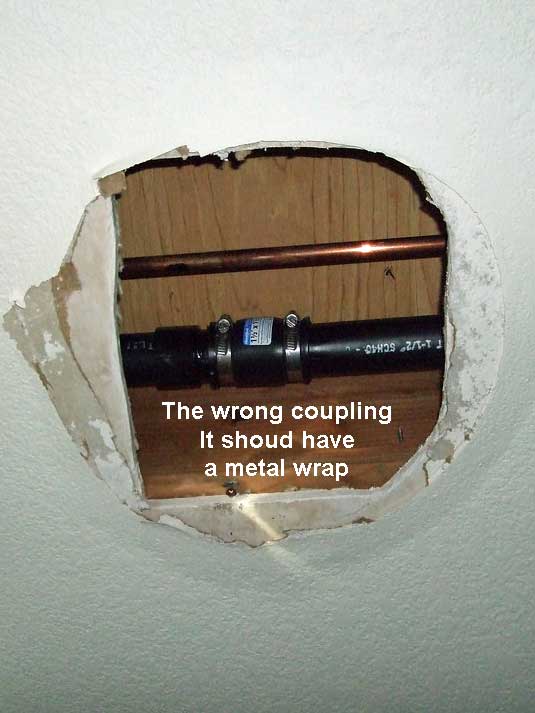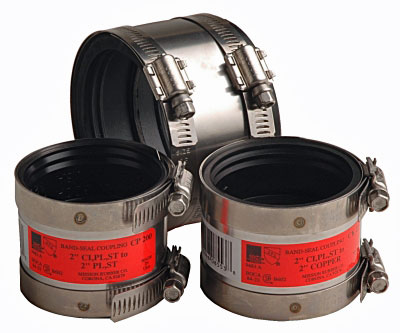dddd
New Member
I had a leak appear yesterday in my downstairs hallway ceiling, turned out to be a broken horizontal black ABS pipe that is the upstairs bathroom drain.
I emergency-fixed it with a rubber coupler after using a saw to complete the break. There is a 1/2" wide chunk of the pipe missing now from about 1/3 of the way around one of the pipe ends.
I mostly want to know why this failed. Should there have been some length-wise flex in the plumbing to accommodate heat expansion? It felt very rigid as far as my not being able to pull the ends of the pipe apart, which had me thinking that there should maybe be some pipe flex somewhere in this direction.
And should I make the inside smoother now because of that missing chip/strip off the end of one of the pipe ends.
I should add that the location is closer to the end of the pipe where it turns 90 degrees toward the lower level, so one to three yards from any of the bathroom fixtures.
This house is about 25 years old. I noted some rot (and rust of the drywall screw) so this had been at least seeping for perhaps a year by now.
Thanks in advance for reading, and here is a picture after I joined it for now.

I emergency-fixed it with a rubber coupler after using a saw to complete the break. There is a 1/2" wide chunk of the pipe missing now from about 1/3 of the way around one of the pipe ends.
I mostly want to know why this failed. Should there have been some length-wise flex in the plumbing to accommodate heat expansion? It felt very rigid as far as my not being able to pull the ends of the pipe apart, which had me thinking that there should maybe be some pipe flex somewhere in this direction.
And should I make the inside smoother now because of that missing chip/strip off the end of one of the pipe ends.
I should add that the location is closer to the end of the pipe where it turns 90 degrees toward the lower level, so one to three yards from any of the bathroom fixtures.
This house is about 25 years old. I noted some rot (and rust of the drywall screw) so this had been at least seeping for perhaps a year by now.
Thanks in advance for reading, and here is a picture after I joined it for now.

Last edited:

